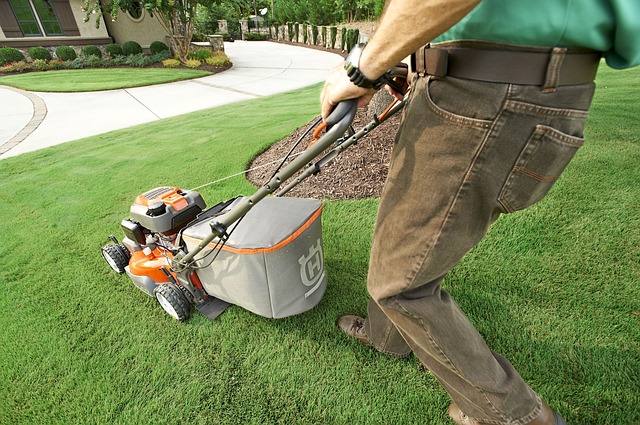A home repair or home addition project often starts with that “what if” moment….that moment in time when you see a commercial on TV, a page in a magazine, or see some improvement project completed by a friend or family. It is at that moment that the light bulb goes on and you imagine for the first time how much better an improvement would make YOUR home look or how much better the efficiency of your household would be with whatever improvement you are envisioning.
project completed by a friend or family. It is at that moment that the light bulb goes on and you imagine for the first time how much better an improvement would make YOUR home look or how much better the efficiency of your household would be with whatever improvement you are envisioning.
For several minutes your excitement level rises as you see in your mind’s eye the beauty or efficiency of the changes you could make. It is also usually about the time you start sharing your excitement and vision with a friend or family member that someone will politely (hopefully) point out that you don’t have much…. or any…. experience in this field. Sadly, these well meaning remarks can and will often dampen your enthusiasm. However, it doesn’t have to.
While it is true that some folks may feel they do not have any natural ability when it comes to “doing it themselves”. …. I sincerely believe most folks can develop those skills with practice and guidance.
“A journey of a thousand miles starts with a single step.” That ancient Chinese proverb applies to so many things in life…from getting higher education, to developing relationships, to raising children and yes… even to starting that deck on the back of your house. Fortunately, most home improvement project will require only a few steps from start to completion. Success is, so many times (if not every time), making that decision to start, then taking the first step and then not quitting until the job is done. That first step though is critical, it so often starts the momentum…a momentum that builds confidence and just as importantly….becomes the success habit.
I worked many years ago in a maintenance department for a small college where a friend and co-worker gave me a piece of advice that has served me well ever since. I was assigned a job in which I had NO experience. I was talking to him about the fact that I had no experience and also relating my apprehension and this is what he said:
“I’m never afraid to try to fix something that’s broken… even though I’ve never worked on it before. It’s already broken. Don’t be afraid to give it a try.”
I took his advice and from then on have continued to take that advice. I’ve made a few mistakes along the way…but have had many more successes and learned much as well.
I’m aware that many home improvement jobs don’t involve repairing something, but rather building something new. However they both share many of the same requirements for success and completion. Do you have a willingness to tackle something new, to take a chance, to manage risk effectively and to be willing to learn a new skill? Are you willing to educate yourself on the subject, plan ahead and work through setbacks ? These are the types of concepts that are involved in both … whether it is a simple repair of a faucet or building an addition onto your home.
“What if I in my effort to repair something or build something new I make it worse?”
I’m going to first respond with a question. “What if you DON’T make it worse? What if you make it BETTER?” With careful planning, and a few basic tools, most household repairs can be safely and effectively completed by the homeowner.
Realistically, every project won’t go smoothly every time. Even though you might be working to repair a problem with a light or even if you are building a new room onto your house…at some point things will go wrong. Don’t let that stop you. Everyone makes mistakes and have setbacks. That’s just part of the learning curve and is a natural occurrence in the educational process. Don’t despair….. but rather push on. Prepare yourself mentally for temporary defeat (it is going to happen at some point)… just know ahead of time that when it happens that you will be required to put even more effort into the project at hand. Also know, that when you do put the extra effort into the project … you will in the end succeed.
The professionals on “This Old House” make it look it easy don’t they? They have some things going for them that you may not. Primarily, they have decades of experience. They have already made their mistakes and learned from them and rarely make a mistake now. The reason they are at their current point of efficiency is that they just didn’t quit…they put in the extra effort, learned from their mistakes and kept moving forward. You can do this too!
Summary:
- You can do this. Don’t let anyone throw a wet towel on your enthusiasm.
- Educate yourself. Seek the knowledge you need to start and finish your project.
- Don’t get discouraged. Prepare yourself for temporary setbacks (speed bumps) … those are just part of the learning curve.
- Put in more effort. Apply more effort when setbacks appear.
- Keep moving forward! Start your project. Take the first step which in turn will lead to the next step.
- Don’t quit until done.
So, what are you waiting for! Get started on that home project you are invisioning and remember you can use the Ask James feature along the way! I’m only a click away!
 The DCI family’s yard is heavily wooded with trees which doesn’t leave much luck for grass or anything else requiring a lot of sunlight, (see James’ humorous post here regarding this struggle) but it does lend itself to some really pretty azaleas. We have several that every spring provide us with the most beautiful display of pinks, coral, and white. They are relatively easy to care for if you are strategic in the kind you pick, you can enjoy their beauty in waves. Some of ours bloom early and others a just a little later giving us extra time to enjoy the show. And … don’t give up on them if, in the fall they are looking a little spindly and it appears their best days are gone.
The DCI family’s yard is heavily wooded with trees which doesn’t leave much luck for grass or anything else requiring a lot of sunlight, (see James’ humorous post here regarding this struggle) but it does lend itself to some really pretty azaleas. We have several that every spring provide us with the most beautiful display of pinks, coral, and white. They are relatively easy to care for if you are strategic in the kind you pick, you can enjoy their beauty in waves. Some of ours bloom early and others a just a little later giving us extra time to enjoy the show. And … don’t give up on them if, in the fall they are looking a little spindly and it appears their best days are gone. This pink one looked just like that but James resisted the thought to cut it down. Instead he mulched it well and let it go. By spring that year, it gave us this beautiful show and continues to do so each year since. If you missed it earlier, Tom Thompson of Natural Art Landscaping wrote a great post for us on spring yard and garden maintenance. Check it out here.
This pink one looked just like that but James resisted the thought to cut it down. Instead he mulched it well and let it go. By spring that year, it gave us this beautiful show and continues to do so each year since. If you missed it earlier, Tom Thompson of Natural Art Landscaping wrote a great post for us on spring yard and garden maintenance. Check it out here.





